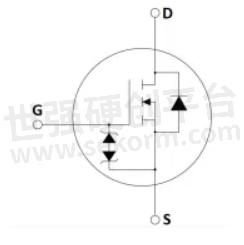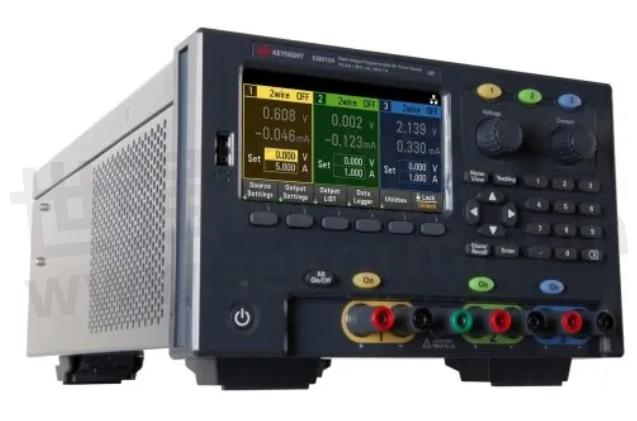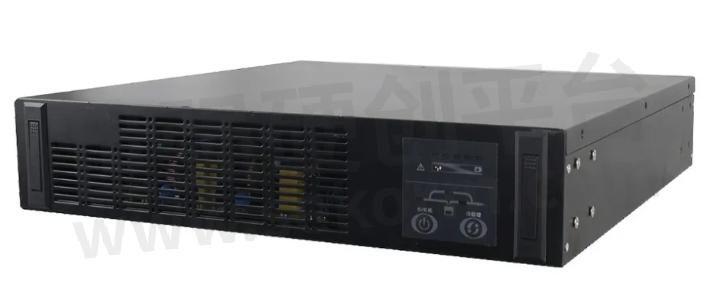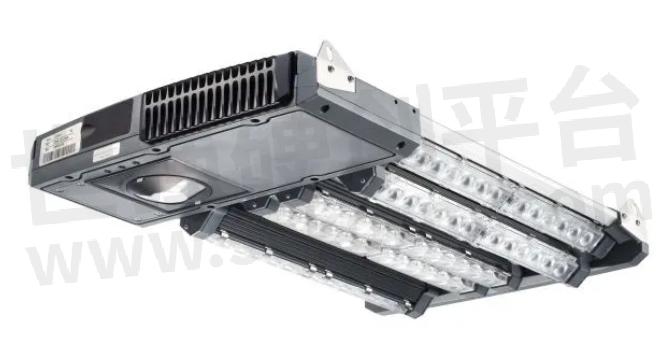Power Components: MOSFET

Power components are key and core components of power electronics technology. They are primarily used in areas such as motor control, light control, power control, electric vehicles, industrial automation, and energy storage. These devices can improve products' energy efficiency and stability and play an important role in various systems.
Specifically, power components include various types, like IGBT (Insulated Gate Bipolar Transistor), MOSFET (Metal-Oxide-Semiconductor Field-Effect Transistor), thyristor, triode and transistor, etc. Among them, power MOSFET is mainly used in systems that require high-precision control and low noise.
Content Points (MOSFET):
1. Structure and Principle
2. Features
3. Classification: P channel and N channel
4. Applications: Industrial Applications
5. Selection Points
Structure and Principle
MOSFET uses the electric field effect to control the conductivity of semiconductor materials. It consists of a metal layer (gate) separated by an oxide layer (gate oxide layer) to maintain the current between the semiconductor layers (drain and source). By changing the gate voltage, the conductive path between the drain and source can be controlled, allowing for precise control of the flow of current.

The power supply principle diagram of a MOSFET
Features
· High input impedance
· Low drive current
· Fast switching speed
· Low on-resistance
· Low power consumption
These characteristics make power MOSFET widely used in fields like power electronics, motor control, and industrial automation.
Classification
MOSFET can be divided into two types: P channel and N channel according to the conductive channel. According to the gate voltage amplitude, it can be divided into depletion mode and enhancement mode. Among them, N-channel enhancement mode power MOSFET is the most commonly used type and can withstand voltages of hundreds of volts and currents of tens of amps. Most of what MASPOWER provides are N-channel MOSFETs.

N-type MOSFET and P-type MOSFET have some differences in structure, working principle and application.
Structure
N-type MOSFET: N-type MOSFET is composed of an N-type channel and a P-type gate. In this type of MOSFET, the source and drain are heavily doped N+ regions, while the body or substrate is P-type.
P-type MOSFET: P-type MOSFET is composed of a P-type channel and an N-type gate. In this type of MOSFET, the source and drain are heavily doped P+ regions, while the body or substrate is N-type.
Working Principle
N-type MOSFET: In N-type MOSFET, when a positive voltage is applied to the gate, a forward bias voltage is formed between the gate and the P-type substrate, causing the acceptor ions in the P-type substrate to form negative charges. These negative charges attract positive charges from the N-type source, forming an N-type channel that allows electrons to flow between the source and drain. When the gate voltage is high enough, the N-type channel becomes wide enough, allowing a large number of electrons to pass through, causing the MOSFET to turn on.
P-type MOSFET: The working principle of P-type MOSFET is similar to that of N-type MOSFET, but the formation and width of the P-type channel are controlled by the gate voltage. When a negative voltage is applied to the gate, a forward bias voltage is formed between the gate and the N-type substrate, causing the donor ions in the N-type substrate to form positive charges. These positive charges attract negative charges from the P-type source, forming a P-type channel that allows holes to flow between the source and drain. When the gate voltage is low enough, the P-type channel becomes wide enough to allow a large number of holes to pass, causing the MOSFET to turn on.
Applications
MOSFETs are extensively utilized in various applications like power supply, motor drives, rectifiers, inverters, battery charging and discharging systems, and more. By controlling the conversion of current, voltage, and power, they enable the creation of efficient, stable, and dependable power electronic systems.
Power Management
MOSFETs play an important role in power switching control, especially in electronic products such as DC-DC converters, LED drivers, and LCD TVs. In these applications, MOSFETs enable efficient management of power by controlling the switching of current and voltage. For example, in a DC-DC power supply, a basic buck converter relies on two MOSFETs to perform the switching function, which alternately stores energy in the inductor and then releases the energy to the load.

DC-DC Power Supply
Motor Control
MOSFET plays a key role in motor control and can control the start, stop and speed regulation of the motor. Whether in the automotive, industrial or household appliance fields, MOSFETs are indispensable components in motor control systems. For example, in motor control applications, a typical half-bridge control circuit uses two MOSFETs (a full-bridge uses four) to achieve precise control of the motor.

Motor Control
Communication Equipment
MOSFET also plays an important role in power amplifiers and radio frequency switches of mobile communication base stations. It can achieve signal amplification and processing to ensure the stable operation of communication equipment.

Communication Power Supply
Lighting Applications
MOSFETs are increasingly used in lighting applications, especially in areas such as high-brightness LED lighting and solar photovoltaic inverters. By controlling current and voltage, MOSFET can achieve stable lighting of LED lights and improve the efficiency and life of the lighting system.

Industrial LED
Automotive Electronics
In the field of automotive electronics, MOSFETs are widely used in engine management, braking systems, seat adjustment, etc. Due to its high-speed switching and low-loss characteristics, MOSFET can ensure the stability and reliability of automotive electronic systems.

In addition, MOSFETs have some application-specific characteristics. For example, in switching power supplies, MOSFET parameters such as output capacitance, threshold voltage, gate impedance and avalanche energy have an important impact on the performance of the power supply. In motor control applications, MOSFETs have equal off-times (dead-time), which helps reduce energy losses and improve system efficiency.
Selection Points
When selecting a power MOSFET, factors such as its voltage and current ratings, Rds, switching speed, thermal stability, and packaging form need to be considered. In addition, the appropriate MOSFET type needs to be selected based on specific application scenarios and needs. MASPOWER provides the most suitable products according to customers' plans and provides customized services.

Common MOSFET packages
In general, MOSFET is a powerful and widely used semiconductor device that can meet the needs of different fields. With the continuous development of technology, the performance and application range of MOSFET will continue to expand.
- +1 Like
- Add to Favorites
Recommend
- The Differences between MOS Tube and IGBT Tube
- Vincotech‘s fastPACK 0 MOS and fastPACK 1 MOS Modules Featuring Cost-effective H-bridge Topology with MOSFETs
- MOS Switch Tube Selection and Principle Application
- What is the Difference between MOS tube and IGBT?
- SOT-23 P-channel MOS BSS84 : Cost Effective Solutions for Low-voltage Applications Requiring a Low-current High-side Switch
- Miller Effect on MOS Tube Switches
- MOS’s Definition and Classification
- MOS Tube Drive Circuit Summary - Detailed Design of Various Switching Power Supply MOS Tube Drive Circuit
This document is provided by Sekorm Platform for VIP exclusive service. The copyright is owned by Sekorm. Without authorization, any medias, websites or individual are not allowed to reprint. When authorizing the reprint, the link of www.sekorm.com must be indicated.

































































































































































































































































































































































































































































































































































































































































































































































































































































































